China wants to grow, go to sea and above all demonstrate that it can do it.
Without oscillating between pessimism and extreme optimism, it is necessary to make some reflections, perhaps by turning to some memories of the Cold War.
historical analogies
When Voenno-morskoj flot began to change and grow (numerically) under the impetus of Admiral Gorshkov the West entered - if not in panic - in swing with the cry of: “The bear has learned to swim”!
Many factors were overestimated starting from the numbers of the units and the influence of direct and indirect propaganda. When, with the collapse of the Soviet Union, we could look better at reality, we realized that "that" Navy was lacking a lot, even though it had certainly been a threat.
Gorshkov (following photo), was the commander-in-chief of the Soviet Navy for almost thirty years exerting a decisive influence on the USSR's naval programs and strategies, and in his long tenure at the top and thanks to his political influence (power) , a real kingdom, was able to plan, promote and develop a huge development program of the Soviet Navy which - thanks to continuous activities - became (numerically) in the seventies the second in the world, considered able to compete on all seas with the US Navy and to support the Soviet Union's military-political influence globally. Impressive results that seemed to endanger the naval superiority of the Western powers.

In the aftermath: an intelligent and effective projection and image action that also translated into a commercial action of exporting means and systems for consolidating areas of influence.
For his achievements and his work in favor of innovation, development and training of the Soviet naval forces, Gorshkov, promoted to the highest rank of admiral of the fleet of the Soviet Union, was considered one of the most able seamen and get ready of Russian history.
Some parallels, with the due distances of time and changing US foreign and naval policies, could still be extrapolated for the rising and drumming Chinese naval policy
The Chinese projection
We pass from large (but expensive and ineffective) demonstrations of force such as the fortification of the islands Spratly to the contiguity of the global operations on the ports to the real tasks and objectives assigned to the PLAN which more than the global projection seem the absolute control of the China Sea and the preparation for the conquest of Taiwan.
A challenge to US supremacy in every field, but also a challenge that the US Navy has accepted, trying to adapt, with ships, few bases, new logistics but above all with new doctrine and changes of strategy, as the major beneficiary of new agreements and alliances that US foreign policy is multiplying. One wonders how long-lasting this turning point can be, after more than two decades of erratic politics, without doctrines and strategies of the US administrations, without real continuity, from the disastrous one of Obama to the more compliant one of Trump (Brown water Navy vs Blue water Navy, 326 units vs 500 units, all in the space of less than twenty years...).
For the People's Liberation Army (PLAN) Navy, 2022 is being "sold" as another very successful year, claiming the position (but certainly not the role) of the largest Navy on the planet; a year in which not as many surface and underwater units were delivered as in 2021, but supremacy continued to be claimed in total number of ships, even in displacement (questionable, for calculation methods and attributions) and in supersonic anti-ship cruise missiles.
PLAN is at sea boasting an expansion also in terms of "operations in the distant seas", relying on the deployment of aircraft carriers outside the first island chain, as well as support for exercises focused on the "Takeover of Taiwan" and combined operations with Russia and other countries.
Overall, PLAN wanted to demonstrate that it is the dominant naval force in the Western Pacific and that it is capable of fully responding to Beijing's expectations and orders, primarily the priority/probability of an invasion of Taiwan. But global presence is still a distant goal.
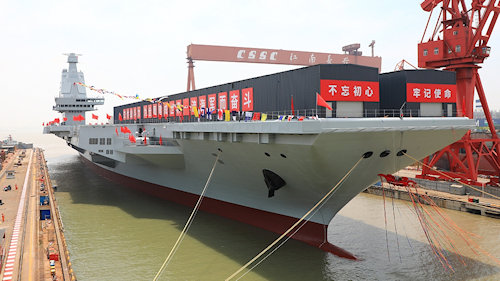 A growth therefore, but how worrying?
A growth therefore, but how worrying?
Aircraft carriers: symbol of PLAN (and propaganda tool)
In 2022 the main event was the launch of the Type 003 aircraft carrier, Fujian (photo), weighing 80.000 tons, the largest warship ever built by an Asian nation, the maximum expression of naval technology in today's China. But when will this unit not only be delivered but truly operational, combat ready? It doesn't matter if sea trials are carried out within the year, when the goal is ten years.
the propaganda, also local, emphasized the adoption of electromagnetic catapults, rather than Liaoning e Shandong from 50.000 tons, equipped with a trampoline, an evolution that should allow the Fujian to launch heavy aircraft, far-warning platform and fixed-wing ASW platforms.
But what are the times for the effective integration of these systems and their real efficiency? Was it the most effective and appropriate solution, not only in terms of time?
their adoption it doesn't mean automatically greater combat capability, greater efficiency, greater deterrence.
The challenge of aircraft carriers is not about construction (and despite the power and capacity of Chinese shipyards the distance is so much even if not abysmal), it is first of all personal and experience...
 The US Navy, with around twenty aircraft carriers (including CATOBAR and amphibious assault supercarriers, ed.) and air groups that have been the backbone of the fleet for decades, has a relatively vast choice of experienced personnel in active service from which to draw in case which he has to train the crew of a new aircraft carrier.
The US Navy, with around twenty aircraft carriers (including CATOBAR and amphibious assault supercarriers, ed.) and air groups that have been the backbone of the fleet for decades, has a relatively vast choice of experienced personnel in active service from which to draw in case which he has to train the crew of a new aircraft carrier.
The PLAN actually resorts to the job training and often to experimentation during the race, "self-generating" experience on boarded aviation (pilots, procedures, hangar and flight deck personnel, fire-fighting, protection and anti-corrosion protocols, non-secondary problems).
Propaganda, always with ample local prominence, spoke of 2022 as year of the beginning of PLAN's “Blue Water” projection and its aircraft carriers: an absurd, worse than one fake news!
"Blue water operations" means conducting flight operations with fixed-wing aircraft from aircraft carriers outside the range of a friendly airfield, a place to land if an aircraft due to breakdown or mission extension cannot return to the ship Any maintenance issue or damage to the aircraft or aircraft carrier could preclude a safe recovery.
Conducting real offshore operations is a high-risk endeavor.
The only possible outcomes are a 100% onboard recovery rate or the loss of the aircraft.
 In reality in December 2021 in the Philippine Sea the Liaoning (photo) conducted flight operations around 700 miles away from the Chinese mainland and in May 2022, a new and more substantial training mission, also in the Philippine Sea, the Liaoning conducted less than half of the flight operations between 500 and 600 miles from China, while most of them were conducted in an area east of Taiwan, at a more favorable distance of 300-400 miles from an airport alternative, also emphasizing that the operations were conducted with "clean" aircraft, not fully loaded with weapons and without external loads that could generate resistance and greater consumption.
In reality in December 2021 in the Philippine Sea the Liaoning (photo) conducted flight operations around 700 miles away from the Chinese mainland and in May 2022, a new and more substantial training mission, also in the Philippine Sea, the Liaoning conducted less than half of the flight operations between 500 and 600 miles from China, while most of them were conducted in an area east of Taiwan, at a more favorable distance of 300-400 miles from an airport alternative, also emphasizing that the operations were conducted with "clean" aircraft, not fully loaded with weapons and without external loads that could generate resistance and greater consumption.
Another relevant fact, with regard to operations, concerns the fact that according to Japanese intelligence the Liaoning led no more than 300 air sorties in 12 days of May 2022 deployment: this corresponds, on average, to less than 20 aircraft sorties per day, combined with dozens of helicopter flights, highlighted by many analysts as a "decent number" of sorties for training.
Too bad - and the numerical comparison is a must with the declared antagonist - that the US aircraft carrier USS Gerald R. Ford (CVN-78), with a displacement of 104.000T and another air group, has recently completed 170 sorties in eight and a half hours of operations, still in the training phase (shake down).
Certainly there Fujian, with catapults (once tuned) it will mark an improvement but… how much and when?
China certainly leverages the "international prestige" of aircraft carriers, but the cornerstone of PLAN's strategy, its level of credibility, at least for the next decade, will probably continue to be the attack (and oddly enough, dispersion) capability of its military units. surface and its submarines (not free from many of the personnel problems of aircraft carriers).
 The ships, many, but coherent in terms of characteristics and development with the aspirations?
The ships, many, but coherent in terms of characteristics and development with the aspirations?
Aircraft carriers are the fulcrum of propaganda but there is no competition, neither in numbers nor in employment.
It is therefore also appropriate to take a more general look at naval production: Chinese shipyards have responded quickly for other units, such as amphibious assault ships, with the delivery in just 18 months of the third Type 075 LHA unit (following photo), the 'Anhui 45.000-ton transport, together with two 071-ton Type 25.000 Assault Transports (LPD), further evidence of PLAN's priorities for functions expeditionary (ESG).
But to which employment doctrine, and how current, do these units respond? Am I up to date?
If the comparison is with the US Navy, the same is not even on the number but on the years of technological and doctrinal evolution.
In addition to the three units mentioned, China has put eight surface units and one underwater unit into service in 2022:
-
three Type 055 class cruisers/Ren Hai;
-
four Type 052D-class guided-missile fighters/Luyang III;
-
a Type 054A class frigate/Jiangkai II;
-
an AIP propulsion submarine of the Type 039C class/Yuan1.
 Important numbers when considered in terms of annual tonnes globally, of the order of what was recorded at least in the last five years, with forecasts for 2023 higher than those for 2022, but... how much expression of a current and coherent program, of innovation, of efficiency, of a balanced structure? What Chinese strategy that besides the defense of the straits (similar to that of Japan at the end of the '30s) that is different from the "show the flag" towards minor countries, perhaps subjected with the "debt strategy", and different from the now evident of the "variable geometry"?
Important numbers when considered in terms of annual tonnes globally, of the order of what was recorded at least in the last five years, with forecasts for 2023 higher than those for 2022, but... how much expression of a current and coherent program, of innovation, of efficiency, of a balanced structure? What Chinese strategy that besides the defense of the straits (similar to that of Japan at the end of the '30s) that is different from the "show the flag" towards minor countries, perhaps subjected with the "debt strategy", and different from the now evident of the "variable geometry"?
If we examine the mix of deliveries, some doubts should arise about the correspondence and adequacy of the total "Blue waters" projection and direct competition with the US Navy, while it could be deduced that the medium-term objectives (10/20 years) are still those of the doctrine that favors the number of ships and the fragmentation of groups and locations (hence the definition of “variable geometry”) even compared to the quality and innovation of the systems.
As for "numbers", the Chinese shipyards have resumed the mass production of a class of surface units for which an evolution should have been thought of, the Type 052D/Luyang III, of which twenty-five already in service: five more units are under construction at the Dalian shipyard, and at least another at the Jiangnan Changxing Shipyard in Shanghai, a shipyard which alone offers a (theoretical) capacity higher than the total of all the US shipyards (seven); a lot of effort for results that are certainly not cutting-edge or really consistent.

So much exhibition and so much noise just for the numbers?
Submarines
PLAN is expected to close the gap to the U.S. Navy's submarine strength, but in this case the numbers don't help.
Certainly these constructions are among the priorities but we are just beyond the preparation of adequate infrastructures: covered slipways are operational at the Bohai shipyard in Huludao, the only plant intended for the construction of nuclear submarines for PLAN.
These new slipways and their covers are estimated to be large enough to allow four or five nuclear submarines to be built simultaneously, ranging from ballistic missile submarines (SSBNs) to attack submarines (SSNs).
In October 2022, photos were leaked of new and larger hulls, attributable to both the new Type 095 (SSN) and the Type 096 (SSBN), which are expected to be larger, quieter and more capable than PLAN's current submarines.
Activity at Huludao, observed in May 2022, revealed a dry-docked submarine incorporating what is believed to be a vertical launch system.
The images don't clearly show whether it's a refit of an existing SSN or the first of the new class, but both possibilities signal a worrying but still limited capacity.
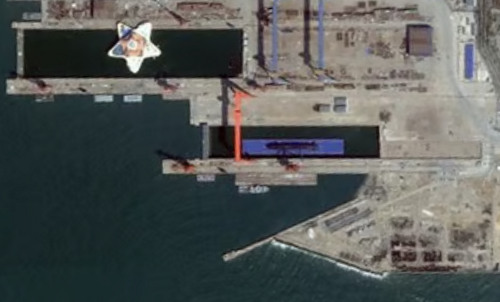
As already noted, beyond the "prestige" of aircraft carriers, the real threat/deterrence of PLAN, its level of credibility, at least for the next decade, should be the attack capability of its submarines but - also in this case - you should go beyond propaganda and exploitation.
The numerical difference is abysmal, we are talking about dozens against over a hundred, of boats that entered service after a period of development that lasted decades and undermined by an infinite series of setbacks and design disasters, not even a frenzied and theoretical production of 5/6 contemporary boats, and the inevitable times of procurement and construction, would be able to bridge the gap for many decades to come (and there is no symptom of a decrease on the other side, indeed the recent AUKUS agreement strengthens the position of contrast).
In the confrontation between potential adversaries, considerations similar to those of aircraft carriers apply, the number does not count but the operations in this case even more dependent on personnel: with decades of experience behind them, a different background technology, a sizable fleet of nuclear submarines, and the practice of double manning, the US Navy has a relative ease of drawing on experienced active duty personnel to train the crew cadres of new units. Although PLAN has more experience in times and numbers than "aircraft carriers" (we are not yet "aircraft carriers") and a greater number of units in service, it is still dealing with the shortage and similar, but more serious, of those of aircraft carriers.
Some major unknowns about the weapons, and their effectiveness: in November 2022, the commander of the US Pacific Fleet, Admiral Samuel Paparo (pictured below), admitted that PLAN has begun to embark the ballistic missile (SLBM) JL- 3 out of its six operational SSBNs of the class Jin.

Its predecessor, the JL-2, had an effective range of approximately 7.200 kilometers (4.464 miles), and would force PLAN SSBNs to operate east of Hawaii to strike the east coast of the United States. If the JL-3 SLBMs proves effective it would become the standard weapon and, with an estimated range of 10.000 kilometers (6.200 miles), would allow boomers of the PLAN of strike across the continental United States by operating from ramparts in the South China Sea.
Operations and demonstration actions
PLAN wants to remember 2022 as the year of its first "blue-water" operations also as task force (one at the moment) of aircraft carriers.
Over the course of a decade, with the first aircraft carriers, PLAN sought to form its Carrier Assault Groups (CSGs) along the lines of those of the US Navy, with a Type 055 guided missile cruiser serving as the anti-aircraft defense pole , with displays consisting of Type 052C guided missile fighters and Type 054 frigates plus a Type 901/class supply shipfuyu.
On this scheme, PLAN tested some CSG operations outside the first island chain in 2022, after having conducted fixed-wing aircraft operations in December 2021 more than 330 nautical miles east of Okinawa.
Under the guise of Nancy Pelosi's visit to Taiwan on August 2, 2022, the PLA conducted major air-sea and missile exercises around Taiwan from August 4 to 10, operations that tested the cooperation of all components of the PLA, simultaneously engaging missile, space, cyber, air, military and naval forces, with the goal of isolating Taiwan and minimizing coastal resistance to invading forces.
PLAN's contributions to what some have described as a dress rehearsal for the invasion of Taiwan they comprised an average of 13-14 naval units per day, including Type 055 cruisers, Type 052D destroyers, Type 054 frigates, Type 056A corvettes and possibly an SSN.
Great hype, consistent exhibition, but in the end... "how much" PLAN?
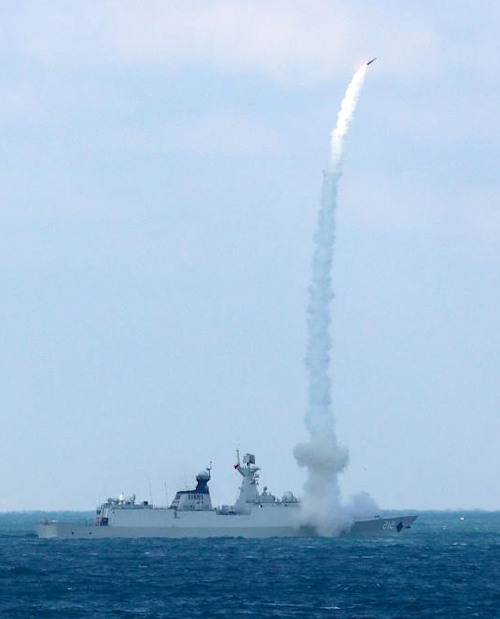
Shadowing and disturbances, real operations but also flag displaying
PLAN's operations in and surrounding Japanese waters have increased, many in cooperation with the Russian Navy. In April and December, above all in every sea, the PLAN units have constantly exercised those free transit operations which they deny to other nations: transited the Osumi Strait, heading for the Philippine Sea (despite China's protests when foreign vessels transit the international waters of the Taiwan Strait or the South China Sea), and the Japanese Ministry of Defense reported that two PLAN warships entered Japanese territorial waters off Kuchinoerabu Island, south of Kyushu.
Continuous operations of free transit and of provocation, certainly to a greater and more constant extent than those exercised by the western or western-aligned navies, actions now coordinated with the Russian navy: in December, when the 41st PLAN escort Task Force, composed of three ships, returned to the China Sea East through the Miyako Strait, two more units of the PLAN passed east through the Osumi Strait into the Philippine Sea, three units of the Russian Navy passed through the same waters at the same time.
The cruiser Lhasa and a PLAN fighter jet passed through three of Japan's strategic straits - Tsushima, Soya and Tsugaru - completely circumnavigating Japan, as a Russian-Chinese formation had already done in October 2021.
It should be emphasized that many of these operations have taken place well within Japan's exclusive economic zone, which China complains about every time foreign units enter the South China Sea or the Taiwan Strait.
During 2022, Russian and Chinese units conducted joint patrols, and in August 2022, the PLA detached units of all forces to participate in the Russian strategic command exercise Vostok 2022.
In an open and evident form, shadowing actions were then carried out in the Hawaii area during the annual multinational exercise Rim of the Pacific (RIMPAC), in July, PLAN detached an Intelligence Gathering Vessel (AGI) to waters surrounding Hawaii, the final focus of operations.
A clear message to the 26 participating nations, with PLAN once again underlining its double standard, condemning handover and data collection operations by foreign units within the First Island Chain while highlighting its own harvesting operations in US and allied waters.
Growth, but how worrying?
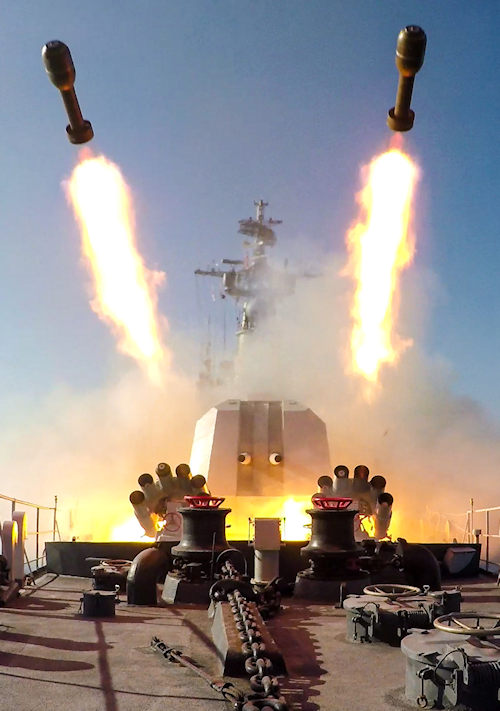 Strategy(s), objectives and perception of the naval instrument
Strategy(s), objectives and perception of the naval instrument
Strangely, even in this case we should resort to the history and analogies that marked the years preceding World War II: the growth and attitude of imperial Japan.
The message that Beijing launches is twofold: that of medium-high pace (and wholly improbable and untenable with regard to the Silk Road) and that ofpreparation for war.
Already in the second year of Russia's devastating invasion of Ukraine, China points out that could invade Taiwan, field shows but also shows and formal stand-ins, such as those of the National People's Congress and the Chinese People's Political Consultative Conference in March 2023 - known as the "two sessions" - during which Xi Jinping made four speeches in which he announced to prepare for war.
Given the production and activities of the PLAN in 2022, if Xi is asking the leaders of the Central Military Commission whether the PLA is ready to invade Taiwan, the projected answer has been yes and soon.
Beyond the utterances and shows within the island chain (the ramparts), there are significant, even if underestimated, facts and factors that limit the capabilities of the PLAN: in the first place the staff, Its training and extensive experience.
Staff: how much maritime vocation?
In recent centuries the sea has been seen by China as the source of threats and most recently it was the limit of the first revolution, the setback of the great march; only in recent decades, in its drive towards growth, in its new revolution, has China acquired awareness of its dependence on the sea and of the sea as an opportunity. This does not make the giant a maritime nation.
"Necessity", not maritime vocation, a strong exercise of discipline and a good level of education have allowed China not only to look to the sea, but to assume some leading roles; however, it took them on at a time of confusion and illusions of the global economy and world relations, of an irreversible peace and "economic self-regulation" of relations.
Great results, of course, but seaworthiness is also tradition and continuitymentality that must underpin and accompany every strategy.
Discipline and order are not enough: this is probably the explanation of the personnel problems and, therefore, of the growth and full compliance of the naval instrument... Dirigisme, planning (with resources and method) can support and accelerate the race to dominate the trades seafarers (also favored by many Western oversights) but the naval race has other aspects.
The PLA (but above all the PLAN) still does not appear able to increase and adjust its human resources fast enough to meet emerging operational requirements.
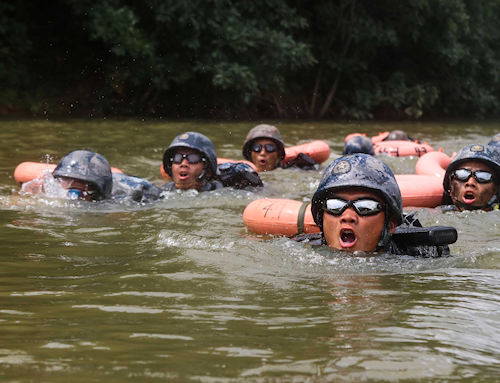
That said, the PLA is making cautious progress: The Chinese military recently embarked on a series of personnel reforms (what they call "talent work") to address recognized shortcomings in human recruitment, training and retention. , however objectives and results which, when they occur, in the maritime and even more naval fields are "generational".
The challenges with a look to the future
As operational capabilities improve, PLAN will attempt (?) to grow by operating away from home waters, creating further challenges for the US and Allies.
In a potential conflict, US forces will face more sophisticated and complex threats from new vectors. In parallel, the PLA will seek to circumvent the US Navy's distributed naval operations strategy (and the efforts of allied forces) with an "extended maneuver": the "variable geometry" strategy.
Naturally, this "geometry" has a double thread, and PLAN must also worry about whether it can survive a coordinated and multi-axial attack.
The "question" may be whether the gains gained and the risks realized by the changing geometry of these new business areas compel one party to act first in a crisis to maintain one's edge.
Certainly the US Navy is not the navy of the 600 ships and multiplicity of Cold War bases but it still is "the" Marina to beat.
The challenge of variable geometry against the reality of dealing at all levels with the true (still) hegemonic naval power, somehow reminiscent of David and Goliath, or Ulysses with the cyclops: many units, important for propaganda and disinformation, aiming for the blatant but also fortunate event . But if you pragmatically go down to the comparison... one is worth one and the result is still bleak for the Chinese. And PLAN knows it very well!

This different assessment of the real strength of the PLAN and the ongoing challenge amply justifies the rebalancing race and the projection of the naval forces of ALL Western nations towards the Indo-Pacific: it means rebuffing the challenge and the arrogant exploitation of its forces by the Chinese towards many countries in the region, from the largest to the smallest, which can thus feel secure and remain in the most favorable area of a world that is deglobalizing and going back to the blocks, it means nullifying the Chinese strategy of variable geometry, of presence rather than power.
In the "competition phase" below the level of armed conflict, the changed geometry of PLAN operations will also create new challenges and risks.
China may not actively seek conflict with the United States or its allies, but it will continue to push the PLAN to the edge, poke the United States, push it to the point of confrontation, but never cross the line of war.
A dangerous game
The "inexperienced" staff (in terms of vocation e maritime and naval tradition) of the central power and the PLA targeting and operating in unknown areas may go too far; it is not known how PLAN will respond and how the US Navy and/or the navy(s) of other nations involved will react in such a case.
The leaders of the Navies projected in the Indo-Pacific, obviously the US Navy in the lead, are paying attention to the changing geometry of PLAN's operations, and recent deployments as well as planned ones are proof of this.
Indo-Pacific and beyond: the Silk Road it was (very appropriate to speak of it in the past tense), the expression of Chinese naval projection in the era of globalization. A projection with ports as links in a logistics chain that remember the British policy of coaling stations (commercial and industrial poles, only potential naval bases in most cases) as an instrument and lever of one's imperial naval power; deglobalization has dented this strategy…
A new global policy is imposed, which for the West is that of the recomposition of block alliances, which for China has rapidly evolved into that of the tunic of facilitator and guarantor of "peace" (pax chinese however), already with more than one attempt as in the case of the Gulf, Iran, ambitions in Syria and Ukraine to be more present in Europe and in the Mediterranean.
A facilitator and guarantor of peace who "offers" (but subtly "imposes") his own presence, above all naval: an incipient global policy which however immediately collided with the recomposition of alliances and impacted the emerging intersection of alliances gravitating on the 'India, the country if not "adversary" certainly "natural contrast to Chinese expansionism"... There was no clash, but certainly an immediate economic/strategic reaction that with the descent into the field of the I2U2 deployment (i.e. the mini-lateral system between India, Israel, the USA and the UAE) is not a simple pizzino, but theactivation of a solid alternative to the Chinese expansionist strategy, which acts on the same level and with the same forms as the Chinese.
China, with its Navy, the PLAN, needs propaganda, visibility, affirmation, but it still doesn't have the credibility of the first global navy.
China depends on the sea for its livelihood, from energy to raw materials, to the food needs of the population including the raiding of fish stocks, to its exports, but it is not (yet) a maritime nation, it does not (yet) have dominion of the sea and it is not inevitable that he will be able to obtain it.
Globalization, as it has been interpreted, was for China a hegemonic transition, understood as a phase of no return; in the recent overlapping of crises (pandemic, energy, war) the collapse of the Western system has not occurred nor the radical transformation for successive adaptations to the advantage of China: energy security pursued with the diversification of sources, the dependence and weakness of the chains logistics, have highlighted how the freedom of the seas and its traffic is one of the values (and pillars) of the Western system, which cannot be renounced. There is still time.
The defense of our values (arresting Chinese hegemonic ambitions and recovering the initiative) begins with the Indo-Pacific: the presence of allied forces - above all in that area of greatest interest (Chinese) which is the fluidity between the Indo-Pacific and the enlarged Mediterranean and includes Persian Gulf and MENA - should also be seen as the western response and adaptation to China's strategy variable geometry.
The balance of the system is (still) the possible goal, the dragon certainly knows how to swim but does not cover the whole pool with its flames and must share its use also with children and the elderly.
Photo: China MoD / web / US Navy / Xinhua












